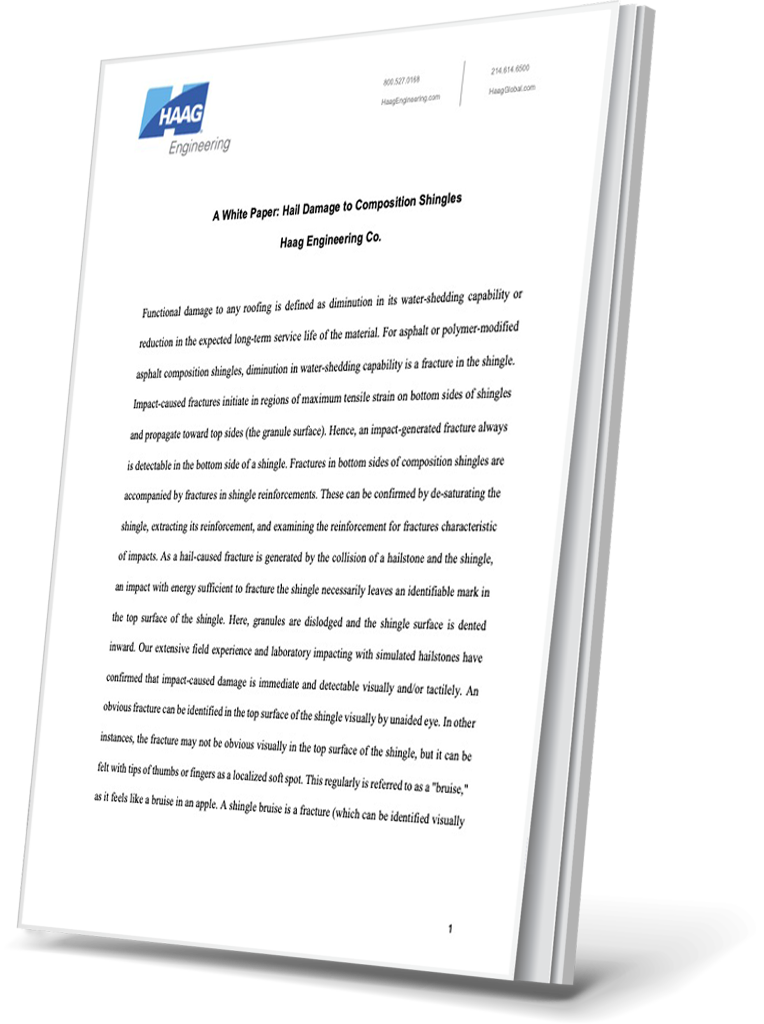Hail Damage to Composition Shingles
The Effects of Granule Loss and Fractures on Shingle Service Life
Functional damage to asphalt and polymer-modified asphalt composition shingles occurs when their water-shedding capability diminishes or their long-term service life is reduced. This damage typically manifests as fractures in the shingles caused by impacts, such as hailstones. These fractures originate from the bottom side of the shingles and propagate upwards, making them detectable both visually and tactilely. The presence of granule loss and surface dents further indicates damage. When hailstones dislodge granules and expose the underlying coating bitumen, it signifies either that the shingle is damaged, nearing the end of its service life, or is defective. In such cases, the damage is immediate and compromises the shingle’s integrity.
Download this technical paper for a more in-depth discussion on:
- Functional Damage: Reduction in water-shedding ability or service life.
- Impact Fractures: Start at the bottom side, visible on the top.
- Detection: Visual and tactile cues like dents or bruises.
- Granule Loss: Indicates potential damage if coating bitumen is exposed.
- Service Life: Affected by hailstones; defects or aging can exacerbate damage.
- Hail-Caused Chips: May or may not constitute damage depending on exposure.
- Non-Hail Damage: Includes manufacturing defects, mechanical damage, and weathering.

